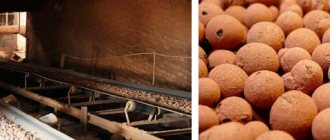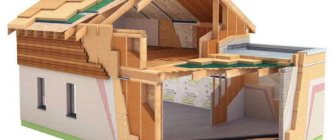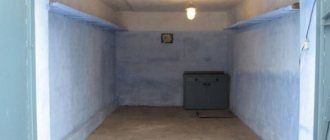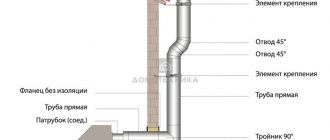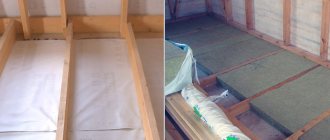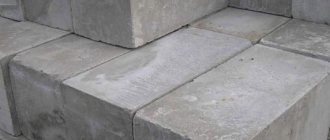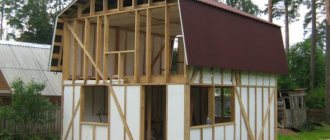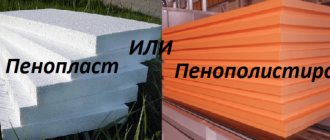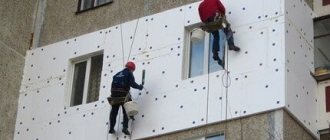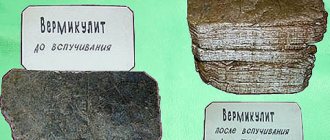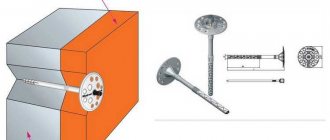What it is
Low-density basalt insulation is a type of mineral wool samples, and its qualities are significantly superior to its other main classes. The product consists of melted and drawn fibers in the form of threads. Mixed in different directions, they create an airy, warm and durable product. Many air bubbles accumulate between these threads, providing an insulating, sound-absorbing, and moisture-reflecting result.
Basalt facade insulation, depending on the density and diameter of the fibers, is classified into three grades:
- soft;
- semi-rigid;
- hard.
The thickness of the cotton wool threads is from 1 micron to 500 microns. Basalt facade insulation is produced in the form of slabs of the following size options:
- 0.5 by 1.0 m;
- 0.6 by 1.2 m.
The thickness of the product is in the range of 5–15 cm. As external insulation for low-rise construction, facade slabs with a thickness of 10 cm are used. An analogue is also produced in rolls. Its distinctive feature is considered to be low density, which is why the material is susceptible to deformation.
Insulation process
The task is to insulate the entire structure. Step-by-step instructions will help you figure out how to insulate a frame house with your own hands.
Facade work
Insulation of a frame house from the outside is carried out using ventilated facade technology. This will allow the insulation to ventilate and dry. This is especially true for mineral wool. Insulation scheme:
- Lathing is made on the wall in increments equal to the width of the insulation, minus 5 mm, to make the installation denser (only for mineral wool).
- A vapor barrier layer is fixed.
- The insulation itself is installed.
- A waterproofing film is mounted on top. The overlap is 5–10 cm, the joints are taped.
- The next step is counter lathing and fixing the siding and lining.
The thickness of insulation for the walls of a frame house cannot be standard. It depends on the region. But on average, a thickness of 15 cm will be enough.
Indoor thermal insulation process
Thermal insulation on both sides will help improve the result, however, usually the goal of the work is additional sound insulation. Installation of steam and hydro-wind protection is not required. The insulation is installed in cells between the beams. First, the step between them is measured and the mineral wool is cut to size. The slabs are laid and covered with plasterboard or various decorative panels. The thickness of the insulation in a frame house is 5 cm.
Ceiling work
How to properly insulate a ceiling? There are no fundamental differences from the classic version. Instructions:
- The work is done during the roof assembly process to make it easier to tightly lay the insulation on the ceiling.
- Inside, a vapor barrier is tensioned onto the beams. No sagging, joints are taped. The beams are covered with boards, OSB or plywood. If these are boards, then the step between them is 40 cm.
- All that remains is to lay mineral wool mats on top so as to avoid voids.
- If you plan to make the attic cold, then there is no need to cover the heat insulator with a membrane, but immediately lay boards or plywood on top for movement.
- If it is not possible to insulate the partitions from above, then this is done from the premises. In this case, the heat insulator is tied up to keep it suspended. Then the vapor barrier and plywood are fixed.
Roof thermal insulation
Performed when the attic is made warm to create an additional room. The material is placed in the space between the joists and sheathed. You just need to adjust the sizes. But to provide protection from water and moisture, a waterproofing film is fixed on top.
It is more convenient to carry out the process from the outside; after installing the rafters from below, everything is stitched with a vapor barrier and OSB, plywood or boards are fixed. Insulation is laid on top and covered with waterproofing and roofing material.
Floor insulation
Here the scheme is the same: installation of hydro-wind protection, laying a layer of insulation between the beams, creating a rough and finished floor from OSB or plywood.
How to insulate a frame house? As you can see, the work is not difficult, but it requires accuracy, perseverance and adherence to technology.
How to produce
To obtain basalt fiber, the technology of melting basalt rocks is used. The temperature during such heating reaches 1500° or more. Then, using an inorganic bonding agent, the basalt fibers are woven together through the process of filtration precipitation. Vacuum treatment is used for filtration. The final phase of production is calcination and then drying of the facade insulation. The heat shock procedure is used for this.
Various technologies can be used in the production of cotton wool:
- A method of heating followed by melting of raw material rock using an electromagnetic field. This allows you to control the process (stop and start again) without wasting time or damaging the crucibles.
- Producers consume little energy - a maximum of 10 MJ per kilogram of melt produced. To perform the process, an induction version of crucible furnaces is used, which allows the use of mineral raw materials in the production of basalt wool.
Important! The output of the production process is low-density facade insulation that is resistant to deformation, elastic and easy to cut.
Types of construction wool
There are such types as:
. This material has a number of irreplaceable properties. First of all, it has low thermal conductivity, performance throughout its entire service life, is resistant to aggressive factors, has minimal shrinkage and an affordable price.
Basalt wool- Mineral wool; it has a fireproof and environmentally friendly structure, which is not harmful to health, does not have toxic plasticizers, which means it can be installed in houses where people with allergies live. Simple installation, convenient classification of wool allows the buyer to determine for himself what kind of construction wool he needs.
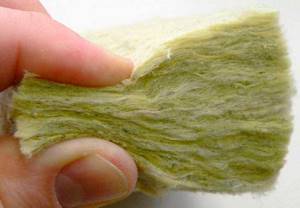
- Composition of basalt wool . One of the components of basalt wool is the melt of a mountain volcanic pore. After special treatments, the melted stone becomes basalt fiber, which has the property of technical thermal insulation. This fiber is also used in modern amplifiers (flexible and panel) and other technologies. The main advantage of high-quality basalt wool is its unique homogeneity, since its composition does not include chemical, slag and lime components. The lower quality of mineral fiber materials does not compensate for their shortcomings, such as thermal conductivity, which is many times worse, as well as an increased chemical composition and danger to the environment.
Advantages and disadvantages

The use of basalt for insulation as thermal insulation of facades allows you to obtain certain advantages in comparison with other insulating materials:
- Fire safety;
- durability;
- low thermal conductivity;
- energy efficiency;
- chemical resistance;
- healthy microclimate;
- acoustic comfort;
- high vapor permeability;
- resistance to microbes and rodents;
- corrosion protection.
Among the disadvantages of low-density facade insulation, the following parameters should be highlighted:
- high price;
- the presence of binding resins, which impairs the environmental friendliness of the insulation;
- vapor permeability;
- protective equipment is required for installation of insulation;
- When laying, joints are formed between the slabs.
Is basalt wool harmful to health?
Another question that worries many: “Is rock wool harmful to health?” In this case, the answer depends on some features. So, cheap, non-certified stoves, one way or another, will harm the body. Well-known manufacturers who are concerned about their reputation and the health of customers have quality certificates indicating that basalt insulation is made from environmentally friendly materials and does not contain harmful impurities. The production technology is carefully controlled and, at the slightest doubt, the products are disposed of. As for the work, in this case there is a small risk - when installing the slab, tiny dust is released, which settles on the mucous membranes and can enter the lungs. In this case, when doing façade work, it is mandatory to use a gauze bandage or a respirator. As for the already installed material, during installation it is insulated with vapor and waterproofing insulators, as well as decorative cladding, which additionally serve as a protective layer against the spread of dust.
So, basalt wool becomes completely safe if you follow the following recommendations:
- purchasing only high-quality material that has a certificate;
- use of protective equipment during work;
- correct installation using protective membranes.
How to choose basalt facade insulation?
When choosing thermal insulation facade insulation, you need to build on the following criteria:
- external characteristics of the product;
- density, which affects the weight of the material;
- the thickness of the roll or mats, which determines the required thermal conductivity coefficient;
- a manufacturing company that offers its own highly specialized or universal solutions that allow thermal insulation with low-density facade insulation.
Important! The main rule in facade insulation: the lower the density of the slab, the better the wool will insulate the structure. You should also take into account the architectural features, the height of the building, as well as the possibility of additional load on the base (foundation).
Description of slabs with different density levels
There are basalt slabs of various density levels. This is reflected in the following properties of insulation: vapor permeability, moisture resistance, resistance to high loads and response to compression of the material.
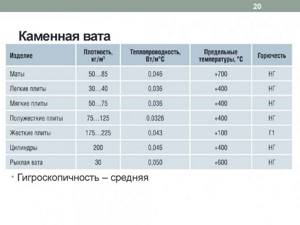
Table of parameters of basalt insulation
Based on density, slabs are divided into the following categories:
- Up to 35 kg/m3 – used for vertical and inclined insulation without load.
- Up to 50 kg/m3 - with the help of such insulation they increase the level of thermal insulation of interior partitions, attics or attics. Where there is no load on the surface.
- Up to 75 kg/m3 – lightly loaded surfaces, under floors when placed between joists.
- Up to 100 kg/m3 – external insulation of industrial and residential buildings.
- Up to 125 kg/m3 – arrangement of ventilated facades.
- Up to 150 kg/m3 – single-layer insulation of reinforced concrete or metal building frames.
- Up to 175 kg/m3 – insulation of heavy buildings with further plastering of the facade. Or it is located inside a three-layer cake.
- Up to 200 kg/m3 - insulation with such a density can withstand the highest loads. The soundproofing qualities of the material are significantly higher than analogues with a lower density level.
Subtleties of application
Low-density basalt wool is used for facade finishing, which is due both to its high moisture strength and thermal efficiency, and to the ability to significantly prevent a decrease in the internal area of the building, which inevitably occurs with internal wall cladding. Installation work should be carried out only on a dry, warm day (air temperature from +5° to +25°C), so that the humidity level does not exceed 80%. It is important that during the installation of low-density facade insulation, direct sunlight does not fall on the treated surface. Laying thermal insulation (insulation for a basalt facade) begins with preparatory work.
Scope of application of basalt wool
Insulating a façade with basalt wool is not limited to just the façade. It is often used for other surfaces. At the same time, its effectiveness does not decrease, which makes this material universal:
- flooring;
- roof (flat, pitched structure);
- insulation from the inside;
- frame house;
- baths and saunas;
- floor coverings;
- foundation;
- basement;
- garage and technical buildings.
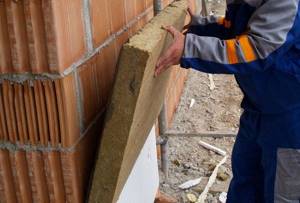
It should be noted that when choosing a heat insulator, homeowners often have the question: “Do mice live in basalt wool?” As a rule, rodents prefer organic fillers - ecowool, reeds, straw. At the same time, it is important for them not only to find food, but also to arrange a nest in which they give birth to offspring and escape from the cold. Also, various obstacles are for them an object with which they grind their teeth - a mandatory process of their life. Basalt insulation is not an organic insulator. In addition, rodents prefer hard bases, and basalt fibers have a soft structure. Thus, insulation becomes uninteresting for them not only in the arrangement of housing, but also in terms of food. In addition, basalt wool is unattractive not only to mice and rats, but also to small insects and worms.
Preparation
Installation of insulation is carried out in two ways. These are the following technologies:
- wet facade;
- on the frame according to the type of ventilated structure.
For work, it is better to take rectangular or wedge-shaped slabs, since they are easier to join together. Preparation includes the following important points:
- removal of various communication systems, objects (nails, fittings);
- cleaning the surface from a layer of plaster and dirt;
- sealing all defects and cracks on the surface using polyurethane foam, tow, and felt;
- if there are differences in the thickness of the facade, it is necessary to adjust them using different thicknesses of low-density basalt insulation;
- priming walls against the development of mold and mildew;
- treatment with a special surface composition to increase adhesion.
Correctly completed preparatory work will help install the thermal insulation system efficiently and quickly. To complete the event, you need to prepare the following products and tools in advance:
- insulation in the form of basalt slabs or cotton wool;
- glassine;
- polyurethane foam;
- wooden slats;
- knife and construction nails;
- grinding float;
- hammer.
Insulation materials
0 votes
+
Vote for!
—
Vote against!
Sooner or later, each of us is faced with the need for construction or renovation, one of the pressing issues of which is thermal insulation. Its relevance is due to the exponentially growing costs of electricity and heating and related thoughts about saving energy resources, as well as excessive concern about the environmental safety of the building materials used, due to the emerging increase in cancer incidence. Despite the fact that the construction market offers the consumer a wide variety of insulation materials characterized by certain advantages, when considering the features of materials from this variety in the process of choosing insulation, they often give preference to basalt wool, the features of which will be discussed in this article.
Content
- Internal or external insulation: what to prefer?
- Scope of application of basalt wool: basic provisions
- Operational and technical characteristics of basalt wool
- Advantages of basalt wool
- Disadvantages of basalt wool and methods for leveling them
- Basalt wool: choice of manufacturer depending on the operating conditions of the structure
- How to insulate with basalt wool: basic recommendations
- Insulating a house with basalt wool: a step-by-step guide
Internal or external insulation: what to prefer?
As already mentioned, sooner or later the issue of saving energy resources arises. How to save on heating a house or apartment? In civilized countries, the answer to this question has long been found, the solution of which lies in the implementation of insulation of houses, cottages, apartments and other buildings. In addition, the feasibility of this insulation method has been fully proven, which is confirmed by the widespread consumption of this building material, which is in third place among building materials in the process of cost analysis for the construction of buildings.
Important! The advisability of insulation can be discussed in two cases: if you have purchased a new house that needs improvements to guarantee comfortable living, or if you are designing a new house from scratch.
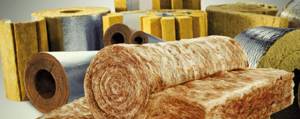
Speaking about the advisability of various types of insulation, it should be noted that the opinions of specialists in this case vary. Some persistently confirm the feasibility of internal insulation, others, on the contrary, believe that the structure, first of all, should be subjected to external insulation, since the internal one is a rather complex process, the question of the feasibility of which is decided in each specific case.
Important! Beginners in the field of insulation often rely on the opinion of “experts” or advice on relevant forums and give preference to internal insulation, which subsequently causes condensation and mold to appear on the walls of the house. The reason for this is the use of cotton wool or dense foam, which, when installed on internal walls, prevents the walls from drying out, which always remain damp.
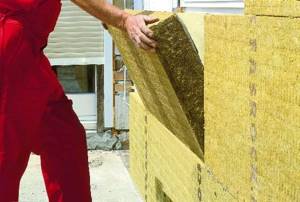
Disadvantages of internal insulation:
- The strength and low thermal conductivity of the insulation combined with high noise insulation characteristics, which cannot be compensated even due to the high cost of the material;
- The presence of seams at the junctions of the insulation reduces the performance characteristics of the material, making it insufficiently airtight;
- In the process of working with this heat-insulating material, small pieces break off from it, which contribute to raising a column of tiny basalt dust and necessitate the use of respirators or covering the surface of the insulation with a layer of waterproofing membrane;
- The high vapor permeability of the material makes it inappropriate to use insulation in some cases, such as insulating the foundation or basement floor, when basalt wool can be replaced with polystyrene foam.

Basalt wool photo
Scope of application of basalt wool: basic provisions
The use of basalt insulation is important in the process of construction and subsequent insulation of almost any building structure. It can be used to insulate roofs of any shape, as well as walls, partitions and ceilings. In addition, the use of basalt wool may be relevant where the feasibility of using other insulation is minimal. To verify this, let’s consider the main areas of use of basalt wool:
- Insulation of rooms characterized by high humidity (for example, baths or saunas);
- Use of ventilated type curtain facades, as well as “wet” facades during installation;
- Use as insulation for walls built from sandwich panels and made according to the principle of “layered masonry”;
- Insulation of ship cabins and other ship structures;
- Use for insulation of pipelines, the surface temperature of which varies from -120 to +1000 degrees;
- Basalt wool as a fireproof insulation prevents the fire of ventilation pipes and other building structures.
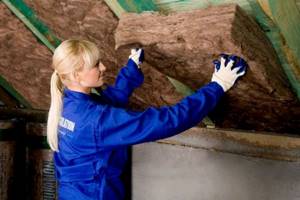
Important! The use of rigid mats made of basalt wool is especially important where exposure to both installation and operational loads exceeding permissible values is expected. If you plan to insulate a ventilated facade, experts recommend using basalt wool, consisting of two layers, each of which is characterized by a different density. In this case, a layer with a looser structure is located on the inside of the heat-insulating layer and is in contact with the surface of the wall, and the second, characterized by a denser texture, should be located on the outside, on the ventilation side.
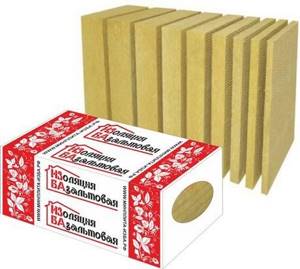
Operational and technical characteristics of basalt wool
To make basalt wool, basalt and some related mineral rocks of the basalt group and close to it are used. To ensure greater fluidity of thin basalt fibers, the manufacturer includes from 10 to 35% limestone or charge into the melt, which helps transform the structure of the fiber and reduce its susceptibility to aggressive environmental factors, including high temperatures. Due to the inclusion of third-party components in the composition of such fiber, it is incorrect to call it basalt, and it is called “basalt mineral wool”. This fiber is called basalt super thin fiber (BSF). It is thinner and shorter (thickness 1-3 microns, length 50 mm).
Technical characteristics of mineral basalt wool:
- Thermal insulation material, which is based on the use of BDST, is characterized by resistance to vibration. During the production of basalt wool, it undergoes vibrothermal treatment at a temperature of 900 degrees, after which the loss in its mass remains minimal and does not exceed 0.35%, which is primarily due to long-fiber wool. In this regard, experts have come to the conclusion that the quality and performance characteristics of basalt wool directly depend on the length of its fibers. An equally important parameter is the degree and nature of crystallization, which helps maintain an optimal level of elasticity and strength characteristics.
- Basalt wool based on thin basalt fibers (BTV) is characterized by lower vibration resistance. During vibration for 3 hours at a temperature of 600 degrees, the mass loss from the initial state is at least 2%, however, when the temperature reaches 900 degrees, the mass loss increases to 12%. In this regard, the conclusion suggests itself that wool based on short fibers is less vibration-resistant.
- Having studied the technical characteristics of basalt wool, one cannot fail to note the absolute non-flammability of the material. Under the influence of high temperatures, there is no destruction of basalt wool fibers, which remain connected and demonstrate high strength.
- Thermal conductivity and hydrophobization of basalt wool. Due to the fact that basalt wool fibers do not retain moisture, it always remains dry and retains its thermal insulation characteristics. Hydrophobization is a natural obstacle to the accumulation of moisture, and therefore there is no increase in the total weight of the structure. This, in turn, prevents the occurrence of mechanical damage.

Important! Despite hydrophobization, the peculiarities of the chemical composition of basalt wool determine its insignificant hygroscopicity, the presence of which guarantees the stability of the thermophysical characteristics of the material, even despite the duration of its use.
Advantages of basalt wool
According to experts, basalt wool has many advantages compared to other thermal insulation materials. Let's look at what they are.
- The single-component nature of basalt wool is one of its main advantages, implying the use of only one rock in the process of its production - basalt. However, modern production technologies require the inclusion of a charge or limestone in its composition, which helps to increase the fluidity of the fibers. Despite this, experts admit that these features of its production may negatively affect the resistance of the heat-insulating material to high temperatures. It is important to know that basalt wool is a qualitatively new material, the production features of which allow its use as the main thermal insulator for residential and administrative buildings, as well as pipelines and refrigeration units;
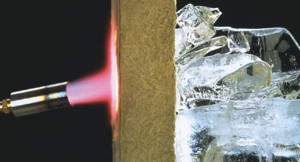
- High heat and sound insulation qualities due to the low thermal conductivity of the material, which contributes to a significant reduction in financial costs for heating the room. The soundproofness of the material is due to its fibrous structure, which reduces the speed of propagation and subsequently dampens sound and vibration waves, converting them into thermal energy;
- As for high thermal insulation characteristics, they are achieved due to the air that is between the fibers and is characterized by a low thermal conductivity coefficient;
- An equally significant advantage of basalt wool is its long service life , which, according to experts, ranges from 30 to 40 years, but in practice demonstrates even higher performance;

- Resistance to chemically aggressive substances (organic oils, acids, alkalis and solvents);
- Water resistance of the material , which is achieved through the inclusion of specialized hydrophobic additives in its composition. The low moisture content in the structure of the material, in turn, helps to increase the thermal insulation characteristics of the material;

- Resistance to damage by mold and fungal microorganisms is one of the important qualities that are important for the insulation of residential premises;
- The high density of basalt wool slabs allows them to withstand increased mechanical loads, and also makes it possible to decorate the material with protective compounds;
- Weather resistance , implying the preservation of original performance characteristics under the influence of changes in temperature and humidity;
- Low specific gravity due to the fibrous structure of the material;
- Convenience of masonry , achieved through large square slabs that immediately cover large areas.

Disadvantages of basalt wool and methods for leveling them
Despite all the above advantages, basalt wool is characterized by certain disadvantages, which under certain conditions can be minimized. Let's look at what they are.
- The structural features of the material contribute to excessive moisture absorption, which reduces the thermal insulation characteristics of the material. How to deal with this disadvantage? Experts believe that the most optimal solution to this issue is foiling or lining an additional vapor barrier layer during the installation process. However, the latter option is less preferable, since the glue used for this reduces the fire resistance of the material. Another solution, the implementation of which does not reduce the performance characteristics of the material, is the purchase of pierced basalt mats;
- In the process of choosing a type of basalt wool, it is necessary to focus on the conditions in which it will be used. If you plan to insulate a house with basalt wool, which is located in conditions of high humidity, experts recommend giving preference to basalt wool with an aluminum coating. If it is necessary to ensure the resistance of the coating to elevated temperatures, then the foil used for this should not be glued to the base, but stitched with galvanized wire. Hydrophobicity indicators are also significantly higher for products in the manufacturing process of which foam rubber was used.
Considering the above, we can come to the conclusion that, despite the presence of certain shortcomings in this material, they can be easily eliminated under certain conditions.
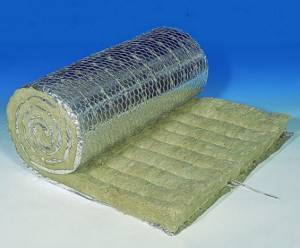
Basalt wool: choice of manufacturer depending on the operating conditions of the structure
- TechnoNIKOL is one of the largest Russian corporations engaged in the production and supply of thermal and waterproofing materials. TechnoNIKOL products first appeared on the Russian market in 1992 and today there are at least 40 production sites throughout Russia, the countries of the former USSR, as well as some EU countries;
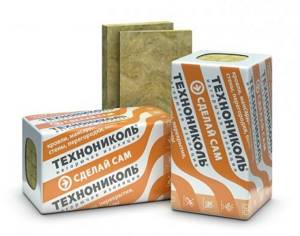
- Rockwool is a company whose main office is located in Denmark, and 23 production sites in 15 countries. The main direction of the corporation is to present its products not only as thermal insulation materials. But also a comprehensive system that is a reliable solution even in the most complex issues of thermal insulation;
- Isover is one of the famous French brands producing stone wool and fiberglass insulation materials. As for Russia, it is one of the largest platforms for the sale of the company’s goods, where the development of this brand is carried out in two directions - technical insulation and private construction.
- The undisputed leadership in the Russian basalt wool market belongs to the companies TechnoNIKOL and Rockwool. The German-Austrian corporation “Izorok” does not plan to give in to them, for the production of its products the highest quality fiber is used. Therefore, it is characterized by low thermal conductivity.
- Kharkov also works with fiber of similar quality, whose products are in no way inferior to other well-known brands.
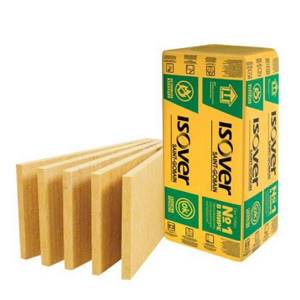
Important! It should be noted that the production of basalt wool is carried out in accordance with GOST and technical conditions developed by each individual enterprise for the production of its unique products. Moreover, in this case, the generally accepted rule for food products does not work, according to which the highest quality products are produced in accordance with GOST. In the case of thermal insulation materials, the situation is different, since modern slabs of one brand or another are produced in accordance with the rules developed by the manufacturer and are the latest development of the company.

- For insulation of non-load-bearing structures, such as attics, attics, partitions and internal walls, it is recommended to use slabs of the above-mentioned brands: “Technolight”, “Izolight”, “Izolight Lux”, “Thermolife Light” and others;
- Quite popular products produced by the TechnoNIKOL corporation are Rocklight slabs and TechnoRoll rolls. They are characterized by a density of 30 kg/m3 and are used primarily for non-load-bearing horizontal structures.
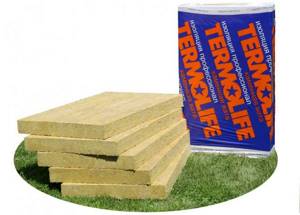
Important! When choosing a material with certain performance characteristics, a general rule applies: for horizontally located non-load-bearing structures, stone wool with any density indicators can be used, while for vertical non-load-bearing structures it is recommended to use a material with a density of at least 35 kg/m3.
- If you choose a material for arranging the middle thermal insulation layer of layered masonry, it is recommended to use a material whose name uses the words “caviti” and “block”: “Technoblock Standard”, “Thermolife Caviti”. In this case, the density of the material must be at least 45 kg/m3.
- To insulate suspended ventilated facades, it is recommended to use insulation materials “Technofas”, “Thermolife Facade”, “Isofas”.

How to insulate with basalt wool: basic recommendations
The technology for installing basalt wool is quite simple, and therefore, insulating a house using this material will most likely not cause any difficulties. When insulating a house, it is recommended to use basalt wool in the form of rectangular or wedge-shaped slabs, since they are most easily joined together during the installation process.
Before insulating with basalt wool, prepare the following materials and tools:
- Basalt wool in the form of slabs;
- Wooden slats;
- Glassine;
- Knife and construction nails;
- Polyurethane foam;
- Hammer and sanding float.
Before starting work, remove all cracks and defects from the surface using polyurethane foam, which can be replaced with tow or felt.
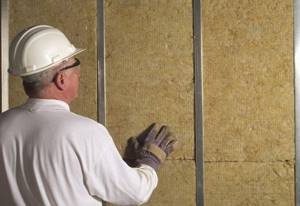
Next, a vapor barrier layer is installed, protecting the insulation from the negative effects of moisture, which can condense on the inner surface of the roof. To maintain the performance characteristics of the material, it is necessary to organize effective ventilation. If you are insulating the roof from the inside, in order to prevent the accumulation of moisture in the thermal insulation material, arrange a vapor barrier layer between the wool and the roofing material, which is a special film that creates a gap between the roof and the insulation and prevents the accumulation of moisture. It is recommended to use foil, plastic film or glassine as a vapor barrier layer, which is secured using a construction stapler or double-sided tape, which creates additional tightness during the process of laying thermal insulation.
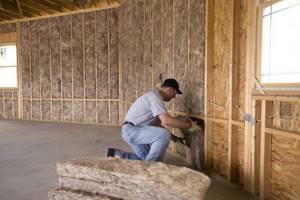
Important! The waterproofing layer is laid directly under the roof. The waterproofing material acts as a kind of barrier that prevents the penetration of moisture not only to the heat insulator, but also to the wooden structural elements. Polyethylene film is used as waterproofing, the strips of which are overlapped. In this case, the lower strips are first secured, and then the upper ones are laid so that they overlap the lower ones.
If the thickness of the thermal insulation material is 50 mm, it is attached to the rafters using a construction stapler. In this case, a lathing made of wooden slats is fixed under the basalt wool slabs. If the thickness of the thermal insulation material is 100 mm, it is placed in the spacer between the rafters. In this case, screws, glue and mastic are used.
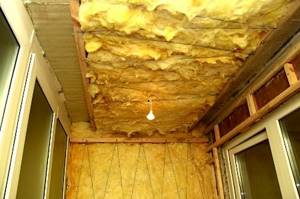
Insulating a house with basalt wool: a step-by-step guide
Insulation of a frame house begins with the installation of a cornice made of metal. It is attached to the wall using dowels in the base area. The cornice is designed to facilitate the installation of insulation and protect the material from the negative effects of rodents;
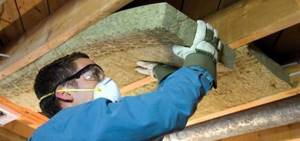
Next, the heat-insulating boards are secured using polymer-cement glue, which ensures reliable fastening of the boards to the wall base. The glue is distributed evenly over the surface of the slab, after which it is pressed against the wall structure. The insulation is installed in the direction from bottom to top and from right to left. First of all, whole slabs are fixed, and after covering large areas with thermal insulation, the insulation is installed in small areas for which the slabs need to be cut;
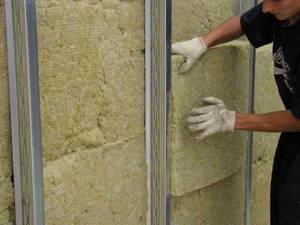
Finally, the surface is leveled with a sanding float, which is necessary in order to subsequently carry out effective installation of the ventilated facade.
Installation of basalt wool video
Installation
The technology called “wet facade” involves the use of binders in the form of glue or solution for installation. It is recommended to use only special glue (such as Ceresit CT190).
First, a pre-prepared vapor barrier film is attached to the wall surface. After this, the following technological actions begin:
- The bars or metal profile are fixed vertically, maintaining an interval that is slightly smaller than the dimensions of the purchased basalt slabs or basalt wool roll. Low-density basalt insulation must fit inside the studs with some force, and then hold itself between them. Similarly, the thickness of the insulation should correspond to the height of the frame slats.
- The cells assembled on the façade are scrupulously filled with basalt wool. It is fastened using glue, while using additional fasteners in the form of dowels, suitable for stone or concrete facades, or self-tapping screws equipped with large washers, when the wall of the building is wooden. To firmly fix the slabs or rolls, it is necessary to use 6 hardware for each square meter.
- After fixing the insulation, a special windproof membrane is laid over it, scrupulously gluing its joints with tape.
- Before starting finishing, it is recommended to build additional sheathing on top of the insulation using thin slats. This will provide a ventilation layer.
- The final stage of construction is the cladding of the facade.
If it is planned to perform thermal insulation on the frame according to the type of ventilated structure, then the work is carried out in this order. First, a selected vapor barrier membrane is attached to the prepared base, which will allow moisture to pass through from inside the structure, preventing it from accumulating inside the basalt insulation. The film is mounted in horizontal stripes. The first is attached to the bottom of the building. Subsequent layers are laid, maintaining a ten-centimeter overlap and sealing the joints with tape.
Subsequent installation
Then you need to equip the frame. Wooden bars or galvanized profiles are used as lathing. The distance between them is affected only by the width of the purchased basalt insulation. It is recommended to reduce this step slightly to allow the wool to fit tightly between the guides.
When the insulation material is laid, a windproof membrane is attached on top of it. It is placed in a similar way to a vapor barrier film. Overlapping and gluing all joints with mechanical fasteners (umbrella dowels) is definitely required. Such fastening will allow you to hold the material - it will not be able to slide. Lastly, the counter-lattice is attached to create a ventilation gap on the façade.
Manufacturers of basalt wool
The modern market for thermal insulation boards is represented by major manufacturers who produce high-quality products and have all the required certificates. In addition, all products are divided into groups and can be used in a wide variety of areas. Thus, production technology takes into account specific features when insulating floors, walls, ceilings, steam rooms, balconies and other things.
Rockwool
Mineral stone wool Rockwool
Rockwool wool is one of the most popular insulators on the market. Manufacturer – Denmark. It has a quality certificate, is produced in the form of slabs or rolls, and has quality characteristics, as evidenced by positive customer reviews. In addition, in addition to insulation for the facade, separate materials are produced for other surfaces. The following types of Rockwool wool exist:
- for baths and saunas – Sauna Butts;
- walls and attic - Light Butts, Scandic, Rockfacade;
- floor, ceiling, interfloor ceilings - Floor Butts;
- facade – Cavity Butts, Facade Butts, Venti Butts, Plaster Butts and many others;
- roofing - all types of Roof Butts, Bondrock.
In addition to the production of insulating boards, Rockwool specialists have developed their own comprehensive system for insulating basalt wool even on the most complex structures.
TechnoNIKOL
TechnoNIKOL stone wool
TechnoNIKOL wool is produced by a domestic manufacturer. It has high heat retention, strength and long service life. Thanks to high technologies, the technical characteristics allowed the stone wool TechnoNIKOL Rocklight, Technofas, Technoruf, Technoflor to enter the international market and gain popularity in the European building materials market.
Knauf (Knauf)
Mineral wool Knauf
Rock wool Knauf is a German manufacturer of thermal insulation materials. As you know, almost any product from Germany has high quality and guaranteed results. This also applies to insulation. High resistance to moisture, various forms of release, safety, low thermal permeability coefficient - these are the main advantages of basalt insulation from this supplier.
Ursa (Ursa)
Ursa mineral wool
Lightweight, flexible slabs with high thermal insulation. As a bonus, you can choose cotton wool without phenol and formaldehyde. Stone wool for facade insulation from this domestic manufacturer is popular for kindergartens, schools, institutes and other institutions where the main requirement is the safety of children.
Isover
Thermal insulation boards made of stone wool Isover
The French manufacturer has been producing high-quality products for home thermal insulation for more than 70 years. They have environmental and fire safety certificates. Basalt slabs are produced at a high technological level.
In addition to the companies presented, we can also mention the Finnish manufacturer of basalt wool Paroc. According to its characteristics, it is similar to TechnoNIKOL cotton wool and has a similar high quality.
Finishing
The final finishing after the main stage of laying the insulation consists of painting the already plastered walls. For this purpose, primer paint is used. To improve adhesion between the wall surface and the paint, the plaster is treated with fine sandpaper.
The final stage will allow you to solve two problems at once: protective and decorative. More common are plastered facades, which are applied to insulation secured using the “wet” method. If the basalt wool is installed using the ventilated facade method, I cover it with siding.
Density options
Basalt wool is used for insulation of private houses. It is widespread due to its ability to withstand high temperatures and easy installation. It is made from gabbro-basalt rocks by drawing out thin threads.
Fibers obtained during hot production are laid out in a chaotic manner and pressed. Thanks to this arrangement, basalt wool retains heat well.
When insulating ventilated facades, mineral insulation of varying densities and thicknesses is used. To obtain products of different densities, manufacturers adjust the compaction density of the strips. They are then cut into the required sizes. In construction stores you can find mineral insulation materials with a density of 35 to 200 kg/m3.
Selection of basalt slabs
Choosing a type of slab should begin with determining the place of its application:
- roof or attic insulation;
- insulation of frame walls;
- external insulation of aerated concrete walls;
- many other options.
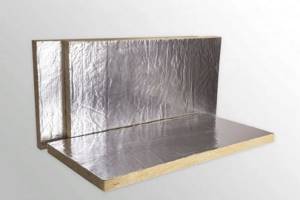
Of course, the selection and purchase of insulation should be entrusted to professionals. But, manufacturers have provided a wide range of products, positioned according to the type of intended use.
| Purpose | Brand |
| Base and insulation of flat roofs | TechnoNIKOL Technoruf N30, Izovol K-120 |
| For roof or attic | TechnoNIKOL Technolight Extra, TechnoNIKOL Technoruf, Izovol Izobel L-25, Paroc Extra, Greenguard Universal, Isover Master of Warm Roofs |
| For walls and partitions | Rockwool Light Butts, TechnoNIKOL Technoblock/Technolight, Rockwool Acoustic Butts |
| For facade | TechnoNIKOL Technofas, TechnoNIKOL TechnoFas Cottage, Rockwool Facade Butts, Izovol F-120, TIZOL Euro-Facade Optima |
| For ceilings and floors | Rockwool Light Butts, Rockwool Acoustic Butts, Rockwool Floor Butts, Paroc eXtra Light, TechnoNIKOL Rocklight, Izovol St-50, Isover Frame House |
Specific requirements for materials
Regardless of what kind of insulation the work will be performed, it must meet certain requirements, which manifest themselves to a greater or lesser extent in each of them.
Thermal insulation
When insulating the walls of a house or apartment, this indicator is one of the most important. It is necessary to use materials with an optimal thermal conductivity coefficient of no more than 0.32 W/mK. The thickness of the insulation layer and its corresponding cost depend on this characteristic.
Moisture resistance
The load-bearing walls of a building and its foundation are the main protection of the premises from the harmful effects of the environment and climatic factors. The accumulation of moisture in the thermal insulation layer will entail an accelerated process of destruction of the insulator itself, as well as the surface of the facade and the entire structure. Therefore, materials used as insulation must meet these requirements. There is a simple way to check this coefficient; it is enough to use this simple method: place a small piece of the selected type of heat insulator in water for several days.
Density
The material used for wall insulation must have the appropriate density and rigidity of the slabs. It is not recommended to use very soft thermal insulation sheets. This can lead to them “sliding” down, subsidence and deformation. The result of this will be a violation of the integrity of the protected surface and the formation of “cold bridges”. The density of conventional foam plastic boards is only 10-20 kg/m3. This indicator is the lowest in the requirements for materials for insulating the walls of buildings from the outside.
Safety
In this selection criteria, two main areas can be distinguished: resistance to open fire and environmental friendliness of the material.
Fire safety
Despite the fact that basically all types of insulation used for finishing external walls are not subject to fire, their use on some facades requires their careful selection. For example, it is highly not recommended to insulate a bathhouse with polystyrene foam-based material. It is not subject to open combustion, but under the influence of fire it melts, releasing toxic gases that are dangerous to humans. Thus, there is a danger of serious respiratory tract injuries, in some cases incompatible with life.
useful in work
When constructing ventilated facades for the walls of absolutely any building: apartment, house, garage or bathhouse, insulation must be done only with non-combustible material. In the event of a possible fire, access to the flame will be hampered by the facing layer. A constant flow of air will cause the fire to intensify.
Environmental friendliness
In order to choose insulation that is harmless to humans during its operation, you need to know the following:
- To insulate the walls of an apartment or residential building, the use of slag wool is not recommended, although it costs slightly less than analogues made from other materials. The slabs release tiny particles of the slag from which they are made into the air. If it enters the lungs, it can have serious health consequences. The use of such insulation is allowed for finishing the walls of industrial facilities, but only outside;
- The choice of good insulation is carried out as follows: any serious manufacturer of thermal insulation provides its consumers with the necessary quality certificates indicating sanitary and epidemiological standards. They contain a list of harmful substances released:
- Phenol;
- formaldehyde;
- xylene;
- Tuluene;
- ammonia.
Which material has the biggest difference in the limit value according to the standards and the actual indicator can be called the highest quality.
Mineral wool – installation on the facade
How to properly fix mineral wool on the facade? First of all, free the wall from everything unnecessary, poorly secured and everything that interferes with work. These include surveillance cameras, drainage systems, protruding nails and other unnecessary things.
It is necessary to prime the wall. When it dries well, you need to install the profile. This is done so that the first row is firmly fixed, and all subsequent rows go smoothly.
The profile is attached to the wall mainly with dowels. The distance should be about 60 cm from ground level.
Pasting cotton wool
To make glue for cotton wool, you need to buy dry glue (powdery substance), which must be diluted with cold water and stirred to obtain a homogeneous mass. Basically, this glue is bought in bags of twenty-five kg. Carefully apply it to the slab and press it firmly to the desired surface. It is recommended to level the glued boards before the glue dries.
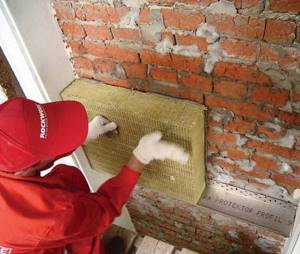
After the first row, lay the second row with the obligatory overlapping of the seams, so you can block possible cold bridges. Special mushrooms are used to secure the slabs.
Wall reinforcement
After the mineral wool for the facade is glued, it is imperative to reinforce the walls. This is done in order to strengthen the “wall - glue - cotton wool” cake and to make it possible to plaster the wool on top. The reinforced surface is very elastic and better absorbs various loads. Mineral wool for plaster comes with a density from 45 (inner layer) to 85 (outer layer).
You also need to take the choice of your reinforcing mesh seriously. It comes in three types:
- made of metal;
- made of plastic;
- made of glass fiber.
If low-density mineral wool (35-45) was used for the facade, then it is better to use metal mesh. This type of mesh is also used to reinforce other structures that are often subject to heavy loads.
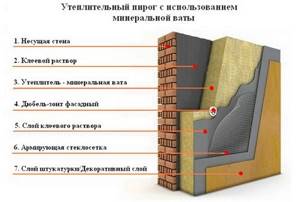
If the plaster mixture does not include cement, then it is best to use a plastic mesh. It is cheaper than metal, but not as durable. Its disadvantage is that it becomes deformed over time. Glass fiber mesh is used if the plaster layer is very thin.
So, let's start installing the mesh. We reinforce the wall with glue. And we press a glass wool mesh into the layer of glue, which is most suitable for insulating the facades of houses.
Reinforcement should start from the corners. Then a day later the rest of the zone is reinforced. Plaster is again applied on top of the mesh.
